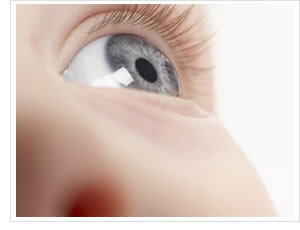Your baby
Swimming


Frequently-Asked Questions
BrillBaby talked to qualified baby-swim instructor Nicole Arnulphy and pediatrician Elsie Lim to answer your most pressing questions about infant swimming.
1. What are the main benefits of infant swimming?
NA: Infant swimming is an excellent way to start your child early along the path to becoming water safe, as well as gaining this important life skill. It’s also a great chance for bonding between a baby and her parents.
2. How many times per week should I take my baby swimming, and for how long each time?
NA: As many times as possible! As for how long, it really depends on the child – until he gets either cold or bored.
3. What is the best age to start swimming lessons?
EL: When it comes to using a swimming pool, I recommend waiting until after the baby’s first set of immunizations, at the age of two months.
At that stage, you can also look for playground swings with baby seats instead of just a flat plank.
4. How long do I need to wait after feeding or nursing my baby to take her swimming?
EL: Wait around an hour and a half to two hours.
5. Up to what age do babies automatically hold their breath underwater?
NA: Until about 6 months [the mammalian dive reflex will stop water from getting into a baby’s lungs]. But even after that age, a baby will not try to breathe once she is under the water. So you just have to get your baby to hold her breath as she is about to go under. To do this, blow on her face hard, right before putting her under.
6. What submersion techniques do you recommend?
NA: We tell the baby that he is going under [e.g. by counting to three], blow on his face hard, then gently put him under. It is good to go under with your baby, as he may keep his eyes open and be able to see you. Moving your baby through the water is also beneficial. It is best to bring your child to a lesson so you can have a teacher demonstrate how to do this properly.
7. Should I take my baby swimming and/or make her go underwater even if she cries?
NA: We don’t want to terrorize the child, but at the same time, we do want to help her feel comfortable in the water. [As your baby’s parent, you are the best judge of her comfort level.]
8. Do you approve of flotation devices?
NA: Yes – to a limited degree. The child should not become dependent to the point where he is upset if he doesn’t have them. On the plus side, flotation devices give children some added independence, which can help to expand their swimming experience.
9. There’s nowhere for me to take my baby swimming in winter. Might he forget everything he’s learned?
NA: Naturally, it’s better to keep going through the winter than to stop. But the effect of stopping really depends on the child. Some forget some stuff, some forget everything, and for some, it’s like there was never a break.
10. What temperature does the water need to be?
NA: For babies, 30-31 degrees C (86-88 degrees F) is an appropriate temperature; warmer if the air is cold.
11. Is regular sunscreen safe for babies?
EL: It is preferable to use a sunscreen specially formulated for babies.
12. I’ve heard that chlorine is bad for babies’ respiratory health, especially when used in indoor pools. When should I be worried?
EL: As long as your child has no specific allergies or respiratory problems, and you do not stay in a chlorinated indoor pool for more than half an hour, she should be fine. [If you can smell the chlorine, it means the amount in the water is higher than it should be. Minimize use of such pools, or ask the pool’s management to consider reducing the chlorine level.]
13. How can I reduce the risk of my child getting an ear infection?
EL: Make sure you dry his ears when you get out of the water. Outer ear infections can be brought on by water left in the ear causing a skin infection. [Middle-ear infections are associated with colds and not caused by swimming.]
14. When will my child be able to swim unaided?
NA: Once your child is comfortable and confident in the water, she will need the strength to breathe on her own. Some children manage this as young as two and a half, but more often it is after they are three.